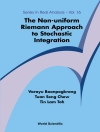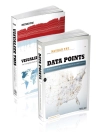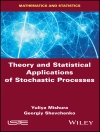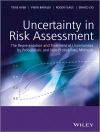By inviting me to write a preface, the organizers of the event in honour of Edwin Diday, have expressed their a?ection and I appreciate this very much. This gives me an opportunity to express my friendship and admiration for Edwin Diday, and I wrote this foreword with pleasure. My ?rst few meetings with Edwin Didaydatebackto1965through1975, daysofthedevelopmentof French statistics. This was a period when access to computers revolutionized the practice of statistics. This does not refer to individual computers or to terminals that have access to powerful networks. This was the era of the ?rst university calculation centres that one accessed over a counter. One would deposit cards on which program and data were punched in and come back a few hours or days later for the results. Like all those who used linear data analysis, the computer enabled me to calculate for each data set the value of mathematical objects (eigenvalues and eigenvectors for example) whose optimality properties had been demonstrated by mathematicians. It was – ready a big step to be able to do this in concrete experimental situations. With Dynamic Clustering Algorithm, Edwin Diday allowed us to discover that computers could be more than just a way of giving numerical values to known mathematical objects. Besides the e?ciency of the solutions he built, he led us to integrate the access to computers di?erently in the research and practice of data analysis.
Spis treści
Analysis of Symbolic Data.- Dependencies and Variation Components of Symbolic Interval-Valued Data.- On the Analysis of Symbolic Data.- Symbolic Analysis to Learn Evolving Cyber Traffic.- A Clustering Algorithm for Symbolic Interval Data Based on a Single Adaptive Hausdorff Distance.- An Agglomerative Hierarchical Clustering Algorithm for Improving Symbolic Object Retrieval.- 3Way Sym-Scal: Three-Way Symbolic Multidimensional Scaling.- Clustering and Validation of Interval Data.- Building Symbolic Objects from Data Streams.- Feature Clustering Method to Detect Monotonic Chain Structures in Symbolic Data.- Symbolic Markov Chains.- Quality Issues in Symbolic Data Analysis.- Dynamic Clustering of Histogram Data: Using the Right Metric.- Clustering Methods.- Beyond the Pyramids: Rigid Clustering Systems.- Indirect Blockmodeling of 3-Way Networks.- Clustering Methods: A History of k-Means Algorithms.- Overlapping Clustering in a Graph Using k-Means and Application to Protein Interactions Networks.- Species Clustering via Classical and Interval Data Representation.- Looking for High Density Zones in a Graph.- Block Bernoulli Parsimonious Clustering Models.- Cluster Analysis Based on Posets.- Hybrid k-Means: Combining Regression-Wise and Centroid-Based Criteria for QSAR.- Partitioning by Particle Swarm Optimization.- Conceptual Analysis of Data.- Concepts of a Discrete Random Variable.- Mining Description Logics Concepts with Relational Concept Analysis.- Representation of Concept Description by Multivalued Taxonomic Preordonance Variables.- Recent Advances in Conceptual Clustering: CLUSTER3.- Symbolic Dynamics in Text: Application to Automated Construction of Concept Hierarchies.- Consensus Methods.- Average Consensus and Infinite Norm Consensus : Two Methods for Ultrametric Trees.- Consensus from Frequent Groupings.- Consensus of Star Tree Hypergraphs.- Data Analysis, Data Mining, and KDD.- Knowledge Management in Environmental Sciences with : Application to Systematics of Corals of the Mascarene Archipelago.- Unsupervised Learning Informational Limit in Case of Sparsely Described Examples.- Data Analysis and Operations Research.- Reduction of Redundant Rules in Statistical Implicative Analysis.- Mining Personal Banking Data to Detect Fraud.- Finding Rules in Data.- Mining Biological Data Using Pyramids.- Association Rules for Categorical and Tree Data.- Induction Graphs for Data Mining.- Dissimilarities: Structures and Indices.- Clustering of Molecules: Influence of the Similarity Measures.- Group Average Representations in Euclidean Distance Cones.- On Lower-Maximal Paired-Ultrametrics.- A Note on Three-Way Dissimilarities and Their Relationship with Two-Way Dissimilarities.- One-to-One Correspondence Between Indexed Cluster Structures and Weakly Indexed Closed Cluster Structures.- Adaptive Dissimilarity Index for Gene Expression Profiles Classification.- Lower (Anti-)Robinson Rank Representations for Symmetric Proximity Matrices.- Density-Based Distances: a New Approach for Evaluating Proximities Between Objects. Applications in Clustering and Discriminant Analysis.- Robinson Cubes.- Multivariate Statistics.- Relative and Absolute Contributions to Aid Strata Interpretation.- Classification and Generalized Principal Component Analysis.- Locally Linear Regression and the Calibration Problem for Micro-Array Analysis.- Sanskrit Manuscript Comparison for Critical Edition and Classification.- Divided Switzerland.- Prediction with Confidence.- Which Bootstrap for Principal Axes Methods?.- PCR and PLS for Clusterwise Regression on Functional Data.- A New Method for Ranking n Statistical Units.- About Relational Correlations.- Dynamic Features Extraction in Soybean Futures Market of China.












